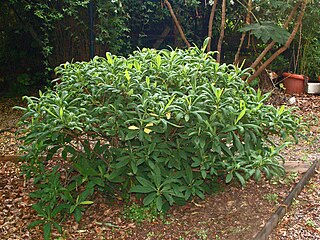
Kazo is a city located in Saitama Prefecture, Japan. As of 1 January 2021, the city had an estimated population of 112,792 in 48,213 households and a population density of 850 persons per km². The total area of the city is 133.30 square kilometres (51.47 sq mi). The city is noted for is known throughout Japan for the creation of koinobori, baseballs, kendo equipment, and Kazo-udon noodles.

Ichihara is a city located in Chiba Prefecture, Japan. As of 1 December 2020, the city had an estimated population of 274,117 in 128,316 households and a population density of 240 persons per km². The total area of the city is 368.20 square kilometres (142.16 sq mi). The city is home, together with the city of Chiba, to the JEF United football club.

Yatomi is a city located in Aichi Prefecture, Japan. As of 1 December 2019, the city had an estimated population of 44,589 in 18,185 households and a population density of 910 persons per km². The total area of the city is 49.0 square kilometres (18.9 sq mi). The between of the border, and neighboring town of Kanie.

Yuzawa is a town located in Niigata Prefecture, Japan. As of 1 July 2019, the town had an estimated population of 7,926, and a population density of 22.2 persons per km2. The total area of the town was 357.29 square kilometres (137.95 sq mi). The town is famous for its hot springs.

Washi (和紙) is traditional Japanese paper. The term is used to describe paper that uses local fiber, processed by hand and made in the traditional manner. Washi is made using fibers from the inner bark of the gampi tree, the mitsumata shrub, or the paper mulberry (kōzo) bush. As a Japanese craft, it is registered as a UNESCO intangible cultural heritage.
The Nakasu was a short-lived, but vibrant and popular entertainment district in Edo, Japan. It was built upon an artificial landfill in the Sumida River, at a place called Mitsumata, in 1771, and lasted until 1790, when the landfill was removed.
Takao II, also known as Sendai Takao or Manji Takao, was a tayū of the Yoshiwara pleasure quarters of Edo, and one of the most famous courtesans of Japan's Edo period (1603-1867). She debuted in 1655 as the leading courtesan of the Great Miura, the most prestigious Yoshiwara brothel of the day, and rapidly became the leading courtesan of the entirety of Yoshiwara.

Japanese tissue is a thin, strong paper made from vegetable fibers. Japanese tissue may be made from one of three plants, the kōzo plant, the mitsumata shrub and the gampi tree. The long, strong fibers of the kōzo plant produce very strong, dimensionally stable papers, and are the most commonly used fibers in the making of Japanese paper (washi). Tissue made from kōzo, or kōzogami (楮紙), comes in varying thicknesses and colors, and is an ideal paper to use in the mending of books. The majority of mending tissues are made from kōzo fibers, though mitsumata and gampi papers also are used. Japanese tissue is also an ideal material for kites and airplanes models covering.

The Prince Hotels, Inc. is the name of a hotel chain company headquartered in Toshima-ku, Tokyo, Japan. It is a subsidiary of Seibu Holdings, Inc. Together with Seibu Railway, Prince Hotels is the core company of Seibu Group.

Tokachi-Mitsumata Caldera is an 8-km wide volcanic caldera in the Ishikari Mountains of Daisetsuzan National Park in Hokkaidō, Japan.

The Central Ishikari Mountains, or more commonly referred to simply as the Ishikari Mountains, are a group of mountains in central Hokkaidō, Japan.

Naeba Ski Resort is a ski resort on the eastern slope of Mount Takenoko (筍山) in Yuzawa (湯沢町), Niigata Prefecture.

Edgeworthia chrysantha is a plant in the family Thymelaeaceae.

Mitsumata Station is a passenger railway station in the city of Maebashi, Gunma Prefecture, Japan, operated by the private railway operator Jōmō Electric Railway Company.

Mount Jōnen is one of the 100 Famous Japanese Mountains, reaching the height of 2,857 m (9,373 ft). It is situated in Japan's Hida Mountains in Nagano Prefecture and in Chūbu-Sangaku National Park. The shape of the mountain looks like the triangle. It can be seen from Azumi Basin.

Mount Yakushi is one of the 100 Famous Japanese Mountains, reaching the height of 2,926 m (9,600 ft). It is situated in Japan's Hida Mountains in Toyama Prefecture. It was specified for Chūbu-Sangaku National Park on December 4, 1934.

Kazusa-Mitsumata Station is a railway station on the Kominato Line in Ichihara, Chiba Prefecture, Japan, operated by the private railway operator Kominato Railway.

Taiki Mitsumata is a Japanese professional baseball infielder for the Chunichi Dragons in Japan's Nippon Professional Baseball.
















